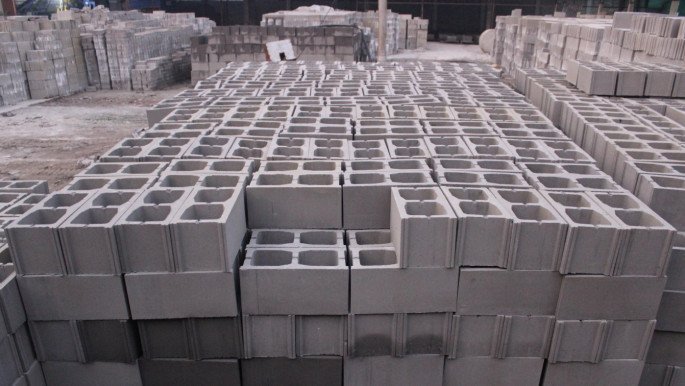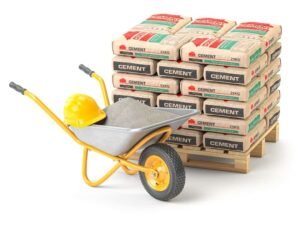Table of Contents
Introduction to Hollow Bricks
What Are Hollow Bricks?
Hollow bricks are a type of building material characterized by their hollow cores, which can be rectangular or circular in shape. These bricks are designed to reduce the overall weight of the structure and improve insulation properties. Unlike solid bricks, which are dense and heavy, hollow bricks contain multiple cavities that make them lighter and more efficient in various construction applications.
Brief History of Hollow Bricks
The concept of hollow bricks dates back to ancient times, but their modern development took off in the late 19th and early 20th centuries. Early versions were created to meet the demand for more efficient construction materials that could offer better insulation and reduce the load on building foundations. Today, hollow bricks are a staple in both residential and commercial construction, prized for their versatility and performance.

Advantages of Hollow Bricks
Thermal Insulation
One of the standout benefits of hollow bricks is their excellent thermal insulation. The air pockets within the bricks act as barriers to heat transfer, keeping buildings cooler in the summer and warmer in the winter. This can lead to significant energy savings as the reliance on artificial heating and cooling is reduced.
Sound Insulation
Hollow bricks also offer superior sound insulation compared to their solid counterparts. The cavities within the bricks help dampen sound transmission, making them ideal for buildings in noisy environments or for constructing soundproof rooms.
Lightweight
Due to their hollow nature, these bricks are significantly lighter than solid bricks. This makes them easier to handle and transport, reducing labor costs and construction time. Additionally, the reduced weight decreases the load on the building’s foundation, allowing for more flexible architectural designs.
Cost-Effective
Hollow bricks can be more cost-effective than solid bricks due to their lower material usage and reduced transportation costs. The improved insulation properties also translate to long-term savings on energy bills.
Eco-Friendly
Many hollow bricks are made from eco-friendly materials such as fly ash or recycled concrete, contributing to sustainable construction practices. Their energy-efficient properties further enhance their environmental benefits.
Types of Hollow Bricks
Concrete Hollow Bricks
Concrete hollow bricks are made from a mixture of cement, sand, and aggregate. They are known for their strength and durability, making them suitable for load-bearing structures. These bricks are available in various sizes and configurations to meet different construction needs.
Clay Hollow Bricks
Clay hollow bricks are manufactured using natural clay, which is fired at high temperatures to create a durable product. They are prized for their aesthetic appeal and excellent thermal and acoustic insulation properties. These bricks are often used in residential buildings for both exterior and interior walls.
Fly Ash Hollow Bricks
Fly ash hollow bricks are produced using fly ash, a byproduct of coal combustion, mixed with cement and water. These bricks are lightweight, have good thermal insulation properties, and are an environmentally friendly option due to the recycling of industrial waste.
Manufacturing Process of Hollow Bricks
Raw Materials Used
The primary materials used in the manufacturing of hollow bricks include cement, sand, aggregates, clay, and fly ash. The choice of materials depends on the type of hollow brick being produced.
Mixing and Molding
The raw materials are thoroughly mixed to form a uniform mixture. This mixture is then molded into the desired brick shape using specialized machinery. The molding process ensures that the cavities are evenly distributed within the bricks.
Drying Process
After molding, the bricks are left to dry naturally or in drying chambers. This step removes excess moisture, which is crucial for the strength and durability of the final product.
Firing or Curing
The final step in the manufacturing process is either firing in kilns (for clay bricks) or curing (for concrete and fly ash bricks). Firing involves heating the bricks at high temperatures to harden them, while curing involves keeping the bricks in a humid environment to allow them to set and gain strength.
Applications of Hollow Bricks
Residential Buildings
Hollow bricks are extensively used in residential construction for building walls, partitions, and facades. Their insulation properties make them ideal for homes, ensuring comfortable living conditions.
Commercial Buildings
In commercial buildings, hollow bricks are used for exterior walls, interior partitions, and even in flooring. Their lightweight nature helps in constructing large structures with ease.
Industrial Buildings
Industrial buildings benefit from the strength and durability of concrete hollow bricks, which can withstand heavy loads and harsh conditions. They are used in constructing factories, warehouses, and workshops.
Garden and Landscape Walls
Hollow bricks are also popular in landscaping for building garden walls, planters, and decorative elements. Their aesthetic appeal and ease of installation make them a favorite among landscape designers.
Comparing Hollow Bricks with Solid Bricks
Weight and Density
Hollow bricks are lighter and less dense compared to solid bricks, making them easier to handle and transport. This characteristic also reduces the overall weight of the structure, providing more design flexibility.
Strength and Durability
While solid bricks are generally stronger due to their dense nature, hollow bricks offer sufficient strength for most construction needs. Advances in manufacturing have improved the strength of hollow bricks, making them suitable for load-bearing applications.
Cost Comparison
Hollow bricks are often more cost-effective due to lower material usage and transportation costs. Additionally, the energy savings from their insulation properties contribute to long-term cost benefits.
Environmental Impact
Hollow bricks have a lower environmental impact compared to solid bricks. Their production often involves recycled materials, and their energy-efficient properties contribute to sustainable building practices.
How to Choose the Right Hollow Bricks
Consider the Purpose
The choice of hollow bricks should be based on the specific requirements of the project. For load-bearing walls, concrete hollow bricks might be the best option, while clay hollow bricks are ideal for aesthetic applications.
Evaluate the Quality
Quality is crucial when selecting hollow bricks. Look for bricks that have a uniform shape, size, and color. Check for any cracks or defects that could compromise the integrity of the structure.
Check for Certifications
Ensure that the hollow bricks meet relevant industry standards and certifications. This guarantees that the bricks have been tested for quality and performance.
Installation and Construction Tips
Foundation Preparation
A strong foundation is essential for the stability of any structure. Ensure that the foundation is level and free from any debris before starting the bricklaying process.
Bricklaying Techniques
Use the proper bricklaying techniques to ensure the stability and strength of the structure. Stagger the joints and ensure that the bricks are aligned properly.
Mortar Mixing and Application
The right mortar mix is crucial for the stability of the structure. Mix the mortar to the correct consistency and apply it evenly between the bricks to ensure strong adhesion.
Curing and Finishing
Proper curing is essential for the strength and durability of the bricks. Keep the walls moist for a specified period to allow the mortar to set and harden. Finish the walls by applying a suitable plaster or paint to enhance their appearance and protect them from the elements.
Maintenance of Hollow Brick Structures
Regular Inspection
Regularly inspect hollow brick structures for any signs of damage or wear. Early detection of issues can prevent more significant problems and costly repairs.
Cleaning Methods
Use appropriate cleaning methods to keep the bricks looking their best. Avoid harsh chemicals that could damage the bricks and opt for gentle cleaning solutions instead.
Repair Techniques
If any bricks are damaged, replace them promptly to maintain the integrity of the structure. Ensure that the replacement bricks match the existing ones in size, shape, and color.
Innovations and Trends in Hollow Bricks
Sustainable Materials
The use of sustainable materials in the production of hollow bricks is on the rise. This includes recycled materials and eco-friendly additives that enhance the performance and reduce the environmental impact of the bricks.
Enhanced Designs
Innovative designs are improving the performance of hollow bricks. This includes better cavity configurations for improved insulation and structural strength.
Smart Integration
The integration of smart technologies into hollow bricks is an emerging trend. This includes bricks with embedded sensors that can monitor the structural health of buildings in real-time.
Challenges and Solutions in Using Hollow Bricks
Common Issues
Common issues with hollow bricks include cracking, moisture absorption, and improper installation. Addressing these issues is crucial for the longevity and performance of the bricks.
Overcoming Obstacles
Solutions to these challenges include using high-quality materials, proper installation techniques, and regular maintenance. These measures ensure that hollow brick structures remain strong and durable.
Future of Hollow Bricks
Emerging Technologies
Emerging technologies are set to revolutionize the production and use of hollow bricks. This includes advancements in materials science and manufacturing processes that improve the performance and sustainability of hollow bricks.
Market Trends
The market for hollow bricks is expected to grow as more builders and architects recognize their benefits. This growth is driven by the increasing demand for sustainable and energy-efficient construction materials.
Conclusion
Summary of Benefits
Hollow bricks offer numerous advantages, including excellent thermal and sound insulation, lightweight, cost-effectiveness, and eco-friendliness. Their versatility makes them suitable for a wide range of construction applications.
Final Thoughts
As the construction industry continues to evolve, hollow bricks will play an increasingly important role in building sustainable, efficient, and aesthetically pleasing structures. By understanding their benefits and proper usage, builders can make informed decisions that enhance the quality and performance of their projects.
Frequently Asked Questions (FAQs)
Are hollow bricks as strong as solid bricks?
Hollow bricks are designed to be strong enough for most construction applications. Advances in manufacturing have improved their strength, making them suitable for load-bearing structures.
Can hollow bricks be used in load-bearing structures?
Yes, hollow bricks, especially concrete hollow bricks, can be used in load-bearing structures. It’s important to choose the right type of hollow brick for the specific application.
What is the cost difference between hollow and solid bricks?
Hollow bricks are often more cost-effective due to lower material and transportation costs. Their insulation properties also lead to long-term energy savings.
How do hollow bricks contribute to energy efficiency?
The cavities in hollow bricks provide excellent thermal insulation, reducing the need for artificial heating and cooling and leading to significant energy savings.
Are hollow bricks environmentally friendly?
Yes, many hollow bricks are made from eco-friendly materials and contribute to sustainable construction practices. Their energy-efficient properties further enhance their environmental benefits.



